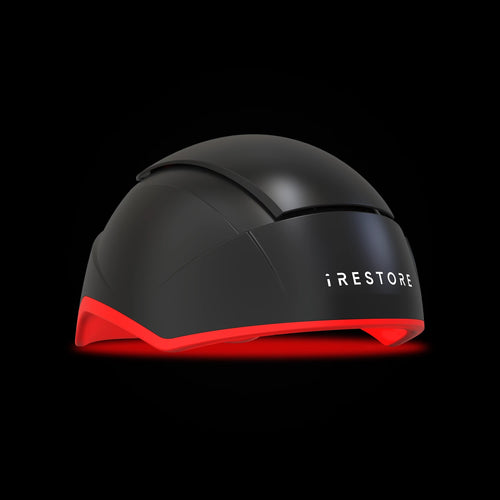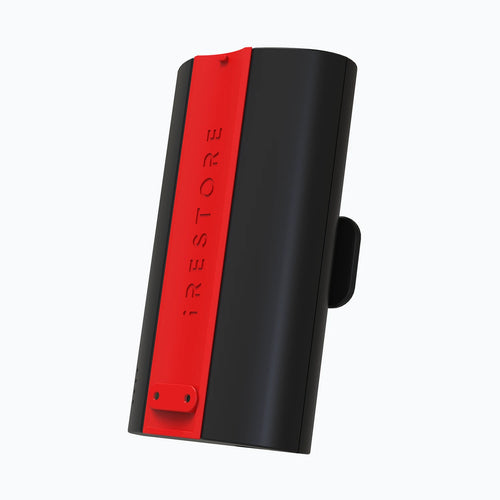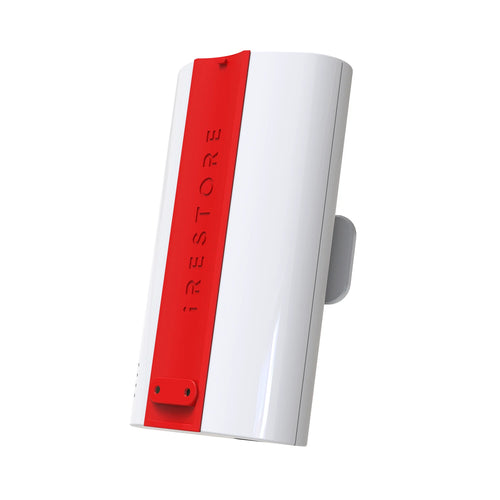If you’ve ever wondered if hair loss is reversible, the answer is: sometimes yes, depending on what’s causing it. Many types of hair thinning happen because the follicle is stressed, lacking nutrients, or temporarily disrupted but still alive. In fact, research shows that over 50% of men and 40% of women experience reversible forms of hair thinning before age 50.
Most early stage shedding happens when follicles enter a “resting” phase too quickly, a condition called telogen effluvium. The good news? Up to 90% of telogen effluvium cases can recover naturally within months especially when the underlying trigger is addressed. This is why experts emphasize early action before miniaturization becomes permanent.
But not all thinning works the same way. Pattern hair loss (androgenetic alopecia) accounts for 95% of hair loss in men and is also common in women. While this type involves gradual follicle shrinkage, studies show many follicles remain dormant, which means they may still respond to therapies that improve energy production and circulation. This includes supportive approaches like nutrition, scalp care, and red light therapy.
So yes, hair loss can be reversible, especially when caught early and supported with science-backed treatments that help reactivate weakened follicles.
What Reversible Hair Loss Look Like
When hair thinning is reversible, the follicle is still alive and capable of producing new strands. This usually shows up as reversing hair thinning rather than complete bald patches. In most cases, the follicle has simply shifted into a resting phase, not died. Dermatology studies show that 90–95% of follicles in early hair loss remain viable, meaning they can re-enter growth with the right stimulation
A key sign of reversible hair loss is diffuse shedding more hair in your brush, sink, or shower, but not a sharply defined bald spot. This pattern is typical in stress-related or nutrient-related shedding. In telogen effluvium specifically, up to 300 hairs per day can shed temporarily, compared to the normal 50–100.
You may also notice that your strands look thinner, weaker, or shorter than usual. This happens when follicles shrink slightly (hair miniaturization) but haven’t shut down. The presence of shorter, wispy regrowth often called “baby hairs” is a strong indicator that the follicle is still active and can recover.
If hair shedding is temporary and the hairline is mostly intact, it’s a sign the follicles haven’t undergone permanent changes. This is especially true when thinning appears after stress, postpartum shifts, illness, crash dieting, or medication changes in situations in which the vast majority of follicles return to normal once the trigger has passed.
Common Causes of Hair Loss
Hair thinning can happen for many reasons, and understanding the root cause is what determines whether hair loss is reversible. Most people experience more than one trigger at the same time: stress, hormones, scalp health, and genetics all influence how your follicles function.
1. Hormonal Imbalances
Hormonal shifts are one of the biggest contributors to reversing hair thinning issues. In androgenetic alopecia (pattern hair loss), follicles become sensitive to DHT (a hormone), which causes gradual miniaturization. According to the American Hair Loss Association, DHT sensitivity accounts for 95% of hair loss in men and is also a major factor in women.
2. Stress-Related Shedding
High stress pushes follicles into a resting phase too early, leading to sudden shedding. This is one of the most reversible hair loss types: studies show up to 90% of telogen effluvium cases recover within 6–9 months once the underlying trigger is resolved.
3. Nutrient Deficiencies
Low levels of iron, vitamin D, zinc, and essential amino acids can weaken follicles, making them shed more easily. Research shows nearly 70% of women with diffuse shedding have at least one detectable deficiency. Nutritional issues are highly reversible once corrected.
4. Poor Scalp Health
Scalp inflammation, product buildup, dandruff, and micro-imbalances can choke the follicle and reduce oxygen and nutrient delivery. Chronic scalp inflammation is linked to higher rates of follicle miniaturization and early thinning. Keeping the scalp clean, hydrated, and balanced often reverses early symptoms.
5. Genetics & Follicle Miniaturization
In mature-receeding hairline differences which are mostly influenced by genetics, follicles shrink slowly over years not overnight. The key insight from dermatology research: miniaturized follicles remain alive, even in long-term thinning, meaning treatments that support energy production (like red light therapy) may help them recover.
6. Illness, Medication, and Hormonal Transitions
Events like severe illness, fever, COVID-19, thyroid disorders, postpartum changes, and certain medications often push follicles into shedding. These cases are typically temporary and reversible because the follicles remain structurally intact.
Science-Backed Ways to Reverse Early Hair Thinning
If you’re still in the early stages of thinning, the good news is that hair loss is reversible for many people. The key is supporting the follicle before miniaturization becomes advanced. These science-backed methods help reactivate weakened follicles and improve density over time.
1. Improve Scalp Microcirculation
Healthy follicles need oxygen and nutrients to function. Poor circulation can weaken the follicle, but improving blood flow helps revive dormant strands. Clinical studies show that scalp-massage stimulation increased hair thickness by 9% after 24 weeks, indicating that circulation plays a major role in reversing hair thinning.
2. Reduce Scalp Inflammation
Inflammation around the follicle is a major driver of thinning and miniaturization. Anti-inflammatory care, gentle cleansing, soothing ingredients, and avoiding product buildup can help protect the follicle environment. Research shows that inflammation accelerates follicle shrinkage, especially in people with genetic sensitivity.
3. Support Follicle Energy Production (ATP Boost)
Hair follicles are highly energy dependent. When stressed, they produce less ATP, which slows growth. Treatments that boost mitochondrial activity can help reactivate dormant follicles. A study found that increasing ATP levels in follicles can “enhance hair production and extend the anagen (growth) phase.”
4. Address Nutritional Gaps
Low levels of iron, vitamin D, zinc, or protein can weaken hair. Addressing deficiencies is one of the most reliable ways to improve reversible hair loss especially for women. A 2020 study showed 70% of women with diffuse thinning improved after correcting key nutrient deficits.
5. Strengthen the Hair Growth Cycle
A healthy cycle means more follicles stay in the growth (anagen) stage. Practices like stress management, sleep support, and avoiding tight hairstyles can reduce cycle disruption. Chronic stress is linked to a significant increase in telogen-phase follicles, which is reversible once the stress is reduced.
6. Use Science-Backed Ingredients & Therapies
Ingredients like rosemary extract, caffeine, peptides, and antioxidants can help improve scalp health and stimulate growth pathways. Studies show caffeine-based topicals can increase follicle activity by 33–40%, making them helpful for early-stage thinning.
7. Consider Red Light Therapy (LLLT)
Low-level laser therapy supports cellular energy production (ATP), improves blood flow, and helps reverse early follicle miniaturization. Multiple controlled studies show that LLLT can increase hair density by 20–25% in 16–24 weeks, especially for early-stage thinning.
Red Light Therapy: How It Helps Support Regrowth
Red light therapy is one of the most researched non-invasive options for people looking to address early thinning. It works by supporting the follicle’s energy production and helping weakened strands recover making it especially useful when hair loss is reversible.
iRESTORE’s Role in Reversing Early Thinning
iRESTORE uses clinically studied red light wavelengths designed to support follicle energy production and density. It’s drug-free, non-invasive, and suitable for people in the early-to-moderate stages of thinning where reversing hair thinning is most achievable.
1. It Increases Cellular Energy (ATP) Inside the Follicle: Low-Level Light Therapy (LLLT) uses wavelengths of 650–680 nm to stimulate the mitochondria inside hair follicles. This boost in ATP helps support stronger, longer, and thicker strands.
2. It Helps Reverse Early Follicle Miniaturization: In the early stages of androgenetic alopecia, follicles shrink but remain alive. LLLT helps counter this by improving energy flow and nutrient delivery to the follicle. Studies show that red light therapy can extend the anagen (growth) phase and help miniaturized follicles produce visibly stronger strands again.
3. It Improves Scalp Microcirculation: Healthy blood flow is essential for reversing thinning. Red light therapy increases microcirculation, which delivers oxygen and nutrients directly to the follicle root. One study found that participants using LLLT saw a 20–25% increase in hair density within 4–6 months.
Real people. Real experiences.
The question “is hair loss reversible?” is something real people ask when they’re scared of losing more hair. Many iRESTORE users started where you are now: noticing extra shedding, a wider part, or a thinner crown, and wondering if it was too late. By acting early and staying consistent with supportive treatments like red light therapy, they’ve seen less shedding, stronger strands, and visibly fuller hair over time. Their stories are a reminder that while no solution works for everyone, early, science-backed care can make a real difference.

Conclusion
So, is hair loss reversible? In many cases, yes, especially when you catch it early. Most follicles don’t die; they simply weaken, miniaturize, or shift into a resting phase due to stress, hormones, inflammation, or nutritional gaps. Research shows that a large percentage of early-stage thinning can improve with the right support, whether that’s better scalp care, nutrition, lifestyle changes, or science-backed therapies.
Reversing early thinning often comes down to one principle: support the follicle before long-term miniaturization sets in. Irestore’s Red Light Therapy (LLLT), in particular, has strong evidence showing it can help boost cellular energy, improve microcirculation, and encourage follicles to re-enter the growth phase making it one of the most researched non-invasive tools available.
If you’re noticing shedding, a widening part, or changes in texture, remember that early action matters. Supporting your scalp and follicles now can significantly increase the chances that hair loss is reversible in your case.
FAQs
1. Can hair loss be fully reversed naturally?
In many cases, yes, especially when the follicle is still active. Nutritional deficiencies, stress-related shedding, postpartum shedding, and scalp inflammation often cause reversible hair loss once the trigger is addressed.
2. How long does it take to see improvement?
Most people begin noticing early regrowth within 3–6 months, depending on the cause and the treatments used. Therapies like red light therapy, improved scalp health, and nutritional support help accelerate recovery when hair loss is reversible.
3. Is thinning at the crown reversible?
Often, yes, especially in the early stages. Crown thinning typically starts with follicle miniaturization, not follicle death. Studies show that miniaturized follicles can still respond to treatments that boost circulation and cellular energy.
Disclaimer: The iRESTORE blog is for informational purposes only and is not intended to replace professional medical advice or treatment. Please do not ignore professional guidance because of information you’ve read here. If you have concerns about your hair or skin health, we encourage you to consult a qualified healthcare professional.



















